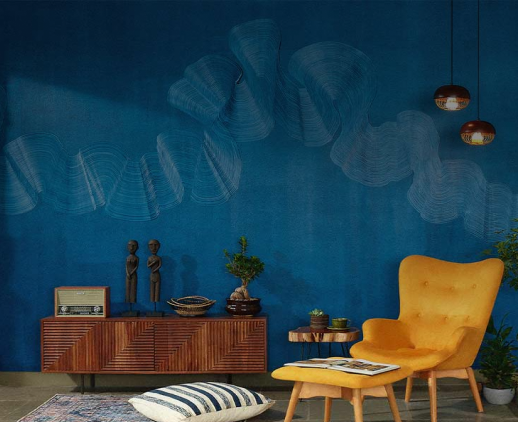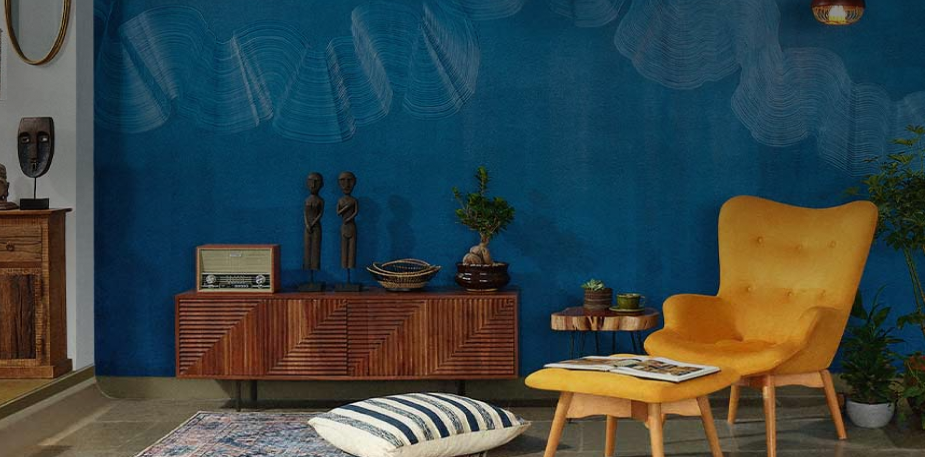Get your home interior design budget estimate
In Kozhikode, a home is built to enjoy the river and to survive it

Perumazhakalam is a Malayalam word that roughly translates to incessant rain. It is our word for the monsoon. A time of continuous, unrelenting rain. It is in the nature of that season to soak the earth, and fell trees but also a time when you’ll catch the scent of the soil, and watch plants turn a deep emerald. A wondrously beautiful yet terribly inconvenient season. Over the last two years though, the monsoon has turned into something much nastier, catastrophic even, making the words ‘climate change’ a regular part of the vocabulary here. And making riverside properties suddenly seem like a foolhardy choice to build a home. Unless of course you’re like architect Shereena Anwar and you build to be prepared.
You can see Ashiyana from the other side of the river, as you drive over from Kozhikode city, which is a 15-minute drive away. The structure has a terracotta tiled roof, and the façade is marked by French-window style glasswork. The bridge that connects the main road to the house stands on stone pillars, and similar stonework lines the embankment of the river below the home.
That embankment is what keeps the river in its place and the house in its, neither in each other’s pathway. During the fierce monsoon of August 2018, many homes located in such positions lost the embankment as the soil simply crumbled under the pressure of the water. “The monsoon is one of the best things that Kerala offers, but it has also been intimidating recently,” says Shereena. “Still, it is magical, and the house, which I would describe as warm, simple and clutter-free, makes the monsoon a little less worrisome.” Here in Kakkodi, things are still in its place.
This is the second in a two-part feature on this Home. Read and watch the video on other features of Ashiyana here.
Shereena and her family—husband Shaji Kakkodi, sons Faris and Abir, and mother-in-law Fathima—live on a riverside family property called Ashiyana in Kakkodi village in Kozhikode, a north Kerala district. Shereena runs a design firm called Muhandez in the city, and just over a year ago, she moved into her own home, which she designed and built.
Waterworld
The house was nearing completion just around the time Kerala faced the worst floods in its modern history. Luckily, Kozhikode fared better than other spots in the state and the Poonoor Puzha, or Poonoor river, which flows just below Shereena’s house swelled up threateningly, but didn’t actually breach the border of the property. “Fortunately our house has not become a victim of the flood, the river rose by at least 2.5 metres from its normal height and rushed past the house. It is intimidating to see it like that but we’ve been fortunate that it didn’t come into the yard at all,” she says. Nevertheless, Shereena’s insurance policy to deal with a possible flooding issue is the design and materials used to create the building.

Shereena Anwar treated materials in a way that it stayed true to its raw and natural form. Polished concrete and polished grey limestone dominate the reception room right beside the entrance.
This home for five is laid out extremely simply, an organic flow of spaces marked out concurrently to the way the family and their guests would use each area. Formal areas flank the entrance on either side, while private spaces are towards the back of the house or on the levels above.

The courtyard brings in light and forms a little tropical-plant garden right in the heart of the house. The sliding doors are French-window style, while the floor is cobbled stonework.
The central feature, like in a traditional Keralan home, is the courtyard, only in this case, Shereena encased it within a box of sliding doors in the French window style. “My husband wanted this space to have a water body with ornamental fish, while I preferred a green oasis, and I guess I won,” she says. Indeed. The courtyard is much smaller in scale than usual, keeping within the scale of this home; it has a selection of tropical plants, bordered by cobbled stones, where wait two chairs and a table, perfectly poised for folks to get a morning dose of Vitamin D, right in the centre of the home. “The courtyard made the made the experience of the monsoon very beautiful,” she says.
A long-jump out of the courtyard and you’re in the open kitchen, which is where the members of the household congregate at most times of the day. Next door to the kitchen and set into the wall, an elevator, chiefly meant for Fathima and older family members, goes up to the family room, master bedroom and kids’ rooms, all facing the river on one side, and opening out to a terrace pool on the other. One more floor up and two attic rooms, one for guests and the other for the boys to mess about it in with their drums and playthings, and you’re done.
Both Muse And Foe
Throughout the scheme of the home, a couple of facets remain consistent: the river as muse and as the main consideration behind the materiality of the spaces. Everything is in a somewhat raw and natural form—polished concrete ceilings, polished grey limestone to emulate the hues of the river, teak, cement tiles, and vitrified tiles for easy management. The muddy colour of the Poonoor even inspired Shereena’s choice of olive-green seating for the upstairs living room. “I joke that this is a washable house,” says Shereena. “On the outside, the use of cobbled stones, brick in the sit-out areas, and all the material through the house being easy to maintain and keep things prim and proper was very important to me,” she says. At the same time, in its surrounding environment the home both blends in and remains distinct.

The olive colour of the sofa and accessories in the family room on the first floor was inspired by the muddy-green colour of the Poonoor river, which is visible from the room.
You can see Ashiyana from the other side of the river, as you drive over from Kozhikode city, which is a 15-minute drive away. The structure has a terracotta tiled roof, and the façade is marked by French-window style glasswork. The bridge that connects the main road to the house stands on stone pillars, and similar stonework lines the embankment of the river below the home.
That embankment is what keeps the river in its place and the house in its, neither in each other’s pathway. During the fierce monsoon of August 2018, many homes located in such positions lost the embankment as the soil simply crumbled under the pressure of the water. “The monsoon is one of the best things that Kerala offers, but it has also been intimidating recently,” says Shereena. “Still, it is magical, and the house, which I would describe as warm, simple and clutter-free, makes the monsoon a little less worrisome.” Here in Kakkodi, things are still in its place.
This is the second in a two-part feature on this Home. Read and watch the video on other features of Ashiyana here.

Get Started with your interior design journey with us!
Speak to our design professionals
What’s the status of your home possession?
What’s the condition of your home/space?
Will you be living in your space during the renovation?
 Previous Question
Previous Question
Is your interior design budget over 4 lakhs?
 Previous Question
Previous Question
Book next available appointment slots with our experts!
Please Select Date and Day
 Previous Question
Previous Question

Something went wrong!
We were unable to receive your details. Please try submitting them again.

Appointment Scheduled!
Thank you for giving an opportunity to Asian Paints Beautiful Homes Service! Our Customer Experience Specialist will get in touch with you soon.
Appointment Date & time
Thank You!
Our team will contact you for further details.
What’s the status of your home possession?
What’s the condition of your home/space?
Will you be living in your space during the renovation ?
 Previous Question
Previous Question
Is your interior design budget over 4 lakhs?
 Previous Question
Previous Question
Book next available appointment slots with our experts!
DEC 2023
Please Select Date and Day
 Previous Question
Previous Question

Something went wrong!
We were unable to receive your details. Please try submitting them again.

Appointment Scheduled!
Thank you for giving an opportunity to Asian Paints Beautiful Homes Service! Our Customer Experience Specialist will get in touch with you soon.
Appointment Date & time
17 Oct 23, 03.00PM - 04.00PM










































